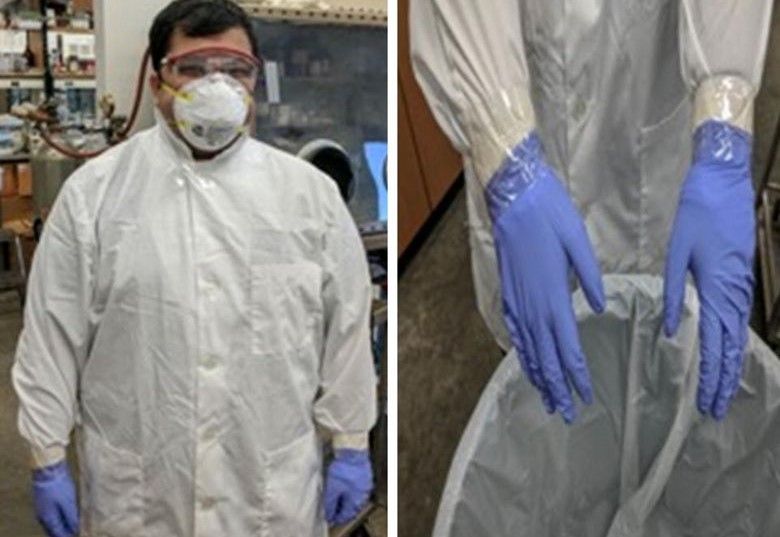As the carbon nanotube industry grows, there needs to be an increased focus on the health and safety aspect of handling such lightweight and inhalable products.
As a result, a team from Rice University have devised safety protocols and personal protective gear to ensure the safe handling of carbon nanotubes. While the procedures and design features are intended for small scale handling of carbon nanotubes in a laboratory, much of the system has potential for industrial scale carbon nanotube production. Furthermore, it could form a groundwork towards safer working practices across the carbon nanotube industry.

One of the biggest problem with handling carbon nanotubes is that they are incredibly light and fluffy, such that simply opening the lid on a large container is enough to send them flying into the air.
While they are not highly toxic, like any minute airborne particles, they can irritate the skin and eyes, as well as enter the throat and lungs, and may cause a wide variety of ailments, such as dermatitis, eye damage, cardiac issues, respiratory illness, autoimmune diseases, cell damage, and circulatory problems.
As the study’s co-author, Prof. Andrew Barron, notes, “There was a series of studies that said if you're going to handle nanotubes, you really need to use safety protocols. Then I saw a study that said many labs didn't use any form of hood or containment system. In the U.S., it was really bad, and in Asia it was even worse.”
In response, the Rice University team have designed a protective bucket system that allows withdrawal of smaller samples of carbon nanotubes with almost zero chance of inhalation.

The procedure is described in the online journal Phys.org, stating that, “… the precautions include making sure workers are properly attired with long pants, long sleeves, lab coats, full goggles and face masks, along with two pairs of gloves duct-taped to the lab coat sleeves. The improvised glove bag involves a 25-gallon trash bin with a plastic bag taped to the rim. The unopened storage container is placed inside, and then the bin is covered with another transparent trash bag, with small holes cut in the top for access.”



Adding that, “After transferring the nanotubes, acetone wipes are used to clean the gloves and more acetone is sprayed inside the barrel so settling nanotubes would stick to the surfaces. These can be recovered and returned to the storage container.”
The study has now been published in the journal SN Applied Sciences, where they explain the increasing significance of safety in a growing industry. They state, “…based on growing demand, it has been suggested that the nanomaterial industry will grow into a $175 billion industry by the year 2025. One of the issues that this upsurge in applications will have to address is that nanomaterials will be synthesized and used on a larger scale than ever before.”
Adding that the simplicity and low cost of the safety procedures and handling design (the bucket system should cost less than $10) will appeal to the numerous small to medium sized operators that use carbon nanotubes as a raw material. They state that, “Data discussing the extent that large scale nanoparticles are being used in industry is limited; however, a 2008 study of 197 Swiss companies showed that nanoparticles were being used up to > 1000 kg/year per company but, on average, it was more on the order of 100 kg/year.”
Originally, the idea was simply to protect laboratory workers and researchers, as Barron explains, "When we decided to write about this, we were originally just going to put it on the web and hope somebody would read it occasionally. We couldn't imagine who would publish it, but we heard that an editor at Springer Nature was really keen to have published articles like this.”
But now the idea has grown into something that could aid safety across the carbon nanotube industry.
As the publication concludes, “Although our study focused on raw SWCNTs as a model as a low-density material … The improvised glove bag technique can be used in a wide range of environments, such as academic research laboratories, R&D laboratories of industries, start-up facilities, and large-scale corporate manufacturing facilities. Furthermore, this method can potentially serve as a guideline to promote safe working practices and regulations such that occupational hazards in the nanotechnology industry can be addressed and minimized.”
Photo credit: SN Applied Sciences, Phys.org, & MIT
